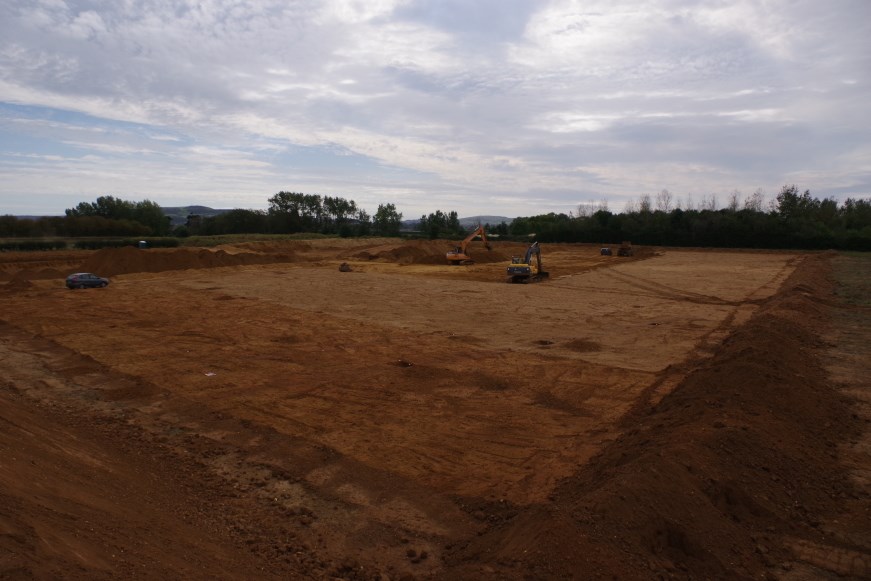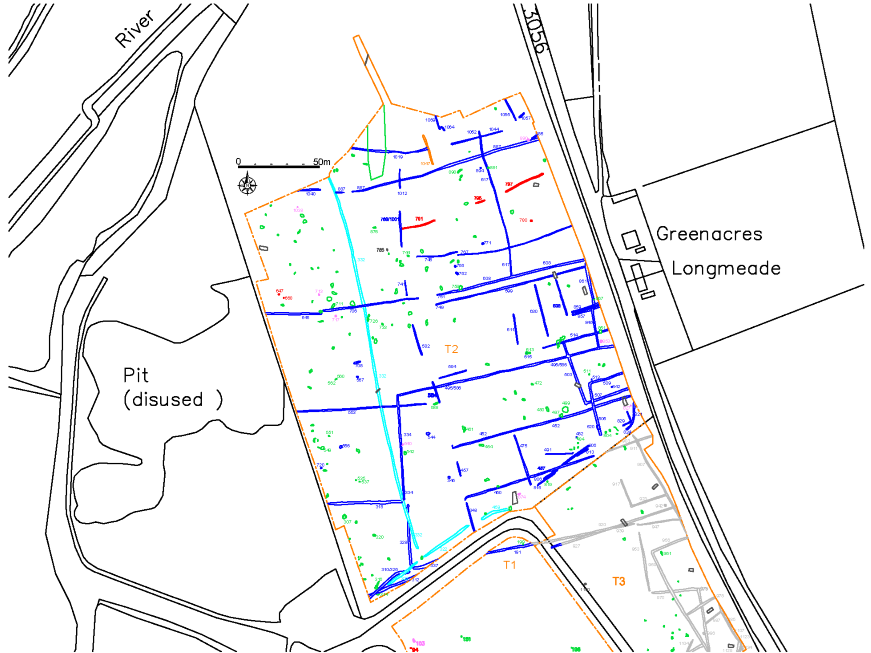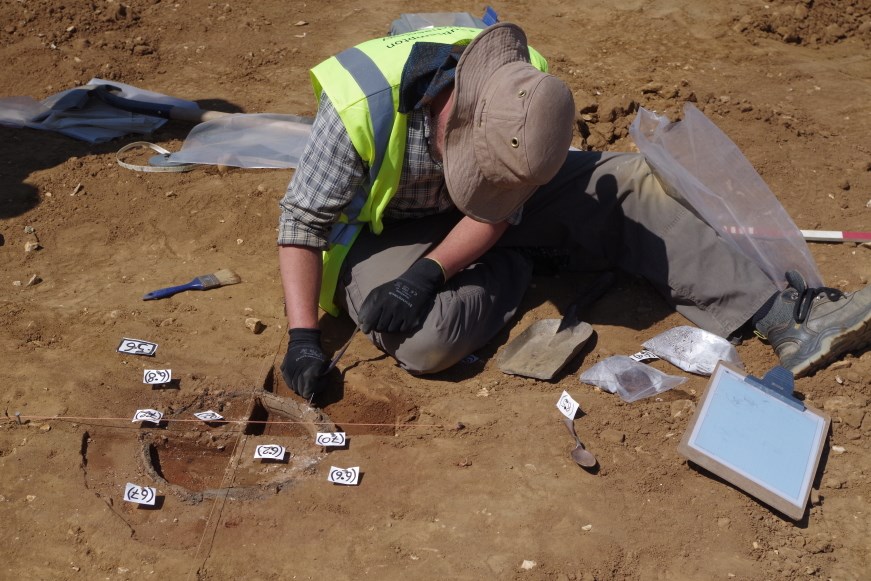Southampton Archaeology Case Studies – Isle of Wight
Archaeological strip, map and sample excavation at a quarry on the Isle of Wight.
Southampton Archaeology is ideally placed to carry out archaeological work on the Isle of Wight, as it’s a short trip from our Southampton office. For several years we have been involved in a strip, map, and sample excavation at a quarry site on the island. The planning condition for the archaeological work was put on the site by the Isle of Wight Council Planning Archaeologist after air-photos revealed a Bronze Age burial mound in one part of the site.

View of the site
The quarry is some 131,848 sqm in area. The overburden is removed in segments under archaeological supervision down to the archaeologically significant deposits at which point the archaeological team excavate and record the ancient remains. We then arrange for that segment to be signed off by the Planning Archaeologist so gravel can be extracted as we move on to the next area. Good coordination and communication with the quarry team has allowed the quarry to work unhindered despite significant archaeology being encountered. This site is the largest archaeological investigation ever carried out on the Isle of Wight. Several Bronze Age burials have been found and over 100 ditches have been excavated and recorded providing unprecedented insight into Late Iron Age / Roman agricultural practises. Digital survey techniques were essential over such a large area. Our 3D mapping software allowed us to digitally record and georeference the positions of finds, locations of cremations and other features. We use this information to analyse the hundreds of metres of the Iron Age / Roman ditch systems.

Plan of Iron Age / Roman ditch systems
A rare Bronze Age cremation cemetery was uncovered, seemingly focused on the burial mound. This was meticulously excavated, recorded and the cremated remains sent to a specialist for analysis.

Archaeologist excavating a cremation
Several pits with Roman pottery were uncovered. The presence of daub, a common building material of the period, in several of these pits suggested a settlement nearby. One pit contained 5 bronze coins dating to 98-175 AD. This site is an excellent example of our excavation team being able to satisfy the local authority by collecting detailed information from a large area, while the quarry workers were actively removing gravel and the quarry functioned as normal.


